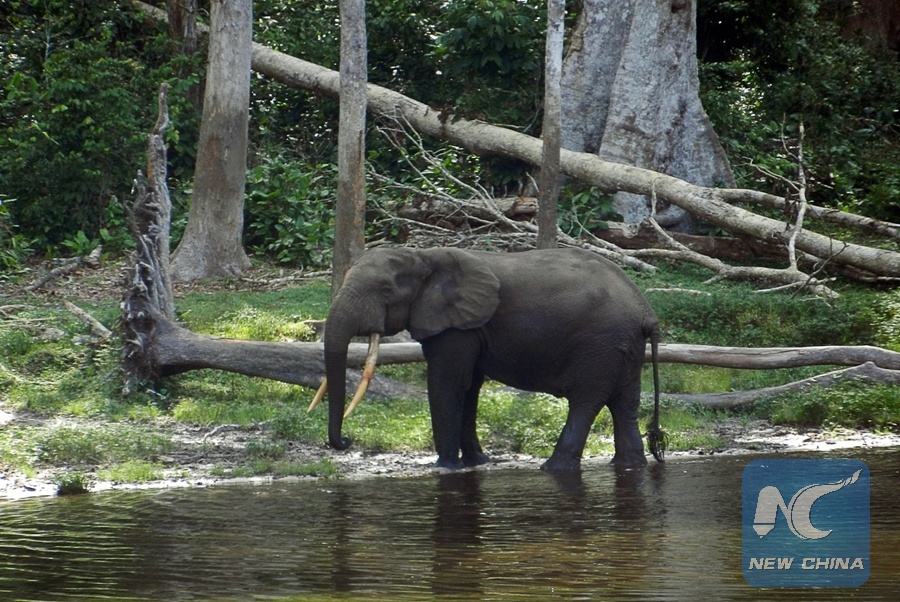

This file picture taken on May 22, 2012 in the Waly Bai area of the Nouabale Ndoki national park, in northern Republic of Congo shows an elephant getting out of the water. Wildlife numbers have plunged by more than half in just 40 years as Earth's human population has nearly doubled, a WWF's survey of over 3,000 vertebrate species revealed on September 30, 2014.(AFP PHOTO/ LAUDES MARTIAL MBON)
Just like global warming, the declining populations of vertebrates including mammals, birds, fish, amphibians and reptiles, have been linked to human activities, and a new study by U.S. and Chinese researchers said they have known exactly when the losses began to accelerate.
"On average, the extent threatened vertebrate species started their rapid population decline at about 125 years ago," senior author Yun-Xin Fu, professor at the University of Texas Health Science Center at Houston, told Xinhua, "that is, in the late 19th century, coinciding with global industrialization and deterioration of worldwide ecosystem."
Further research revealed that, on average, population sizes in threatened species declined by about 25 percent every 10 years.
The findings, published this week in the U.S. journal Proceedings of the National Academy of Sciences, was based on an analysis of 2,764 species, among which more than 600 are threatened.
"Our goal is to understand the genetic characteristics of threatened species and to use the gained knowledge to provide foundation and guidance to the world-wide conservation effort," said Fu, who worked with Professor Haipeng Li of the Chinese Academy of Sciences on the study.
"To achieve this goal, we have to understand how the population size of a species declines to the point of becoming threatened. With effort spanning over a decade, we managed to assemble a comprehensive dataset of genetic diversities of thousands of species, most of which are vertebrates and as a result we focus on vertebrates in this paper."
The study also showed that threatened species' ancestral population size was only 22 percent smaller than that of non-threatened species.
"The difference of genetic diversity between threatened and non-threatened species is far smaller than the extent of population size difference between the two groups," Fu explained.
That implied "rapid population decline of many vertebrate species is the principle cause of many threatened vertebrate species, rather than caused by primarily low genetic diversity."
In other others, smaller populations are more likely to become threatened or fade to extinction when faced with natural or human threats.
And for vertebrate species, "the most obvious explanation is the alarming rate of loss of habitats," said Fu.
"Therefore, effort to preserve natural habitats of as many species as possible is of ultimate importance, together with effort to maintain adequate genetic diversity for each specie." (Xinhua)

86-10-68597521 (day)
86-10-68597289 (night)

86-10-68511095 (day)
86-10-68512458 (night)

cas_en@cas.cn

52 Sanlihe Rd., Xicheng District,
Beijing, China (100864)

